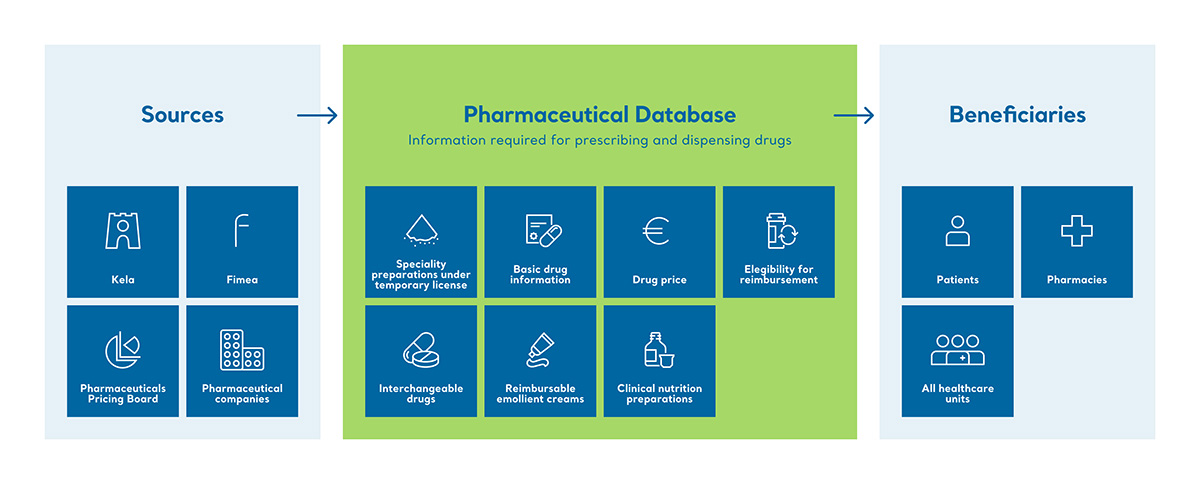Pharmaceutical Database: easier prescribing with uniform drug information
The Kanta Services Pharmaceutical Database, designed for professional use, contains up-to-date drug information. What if the preparation does not show up in the system?

"In addition to licensed drugs, the Pharmaceutical Database contains details of preparations under temporary special license, as well as reimbursable emollient creams and clinical nutrition preparations," adds Katriina Köli, Client Manager of the Pharmaceutical Database.
The information in the Pharmaceutical Database may be used by all healthcare units and pharmacies. The service is provided and maintained by Kela. The Pharmaceutical Database information comes from various sources: the Finnish Medicines Agency Fimea, Pharmaceuticals Pricing Board (Hila), Kela, and the price details of drugs from pharmaceutical companies. The technical administrator of the Pharmaceutical Database is the Pharmaceutical Information Centre Ltd.
Whom does the Pharmaceutical Database benefit?
The Pharmaceutical Database was launched in 2010 simultaneously with electronic prescriptions. Previously, the health services were using very variable drug registers in terms of coverage, in which some of the information may have been outdated. With the move to electronic prescriptions, the need for a single national pharmaceutical database was identified, allowing everyone access to up-to-date and uniform drug information.
"The database must be updated twice a month, on the 1st and 15th of each month. Admittedly, the health services are still occasionally meeting with the problem that the Pharmaceutical Database has not been updated. For example, a doctor may prescribe a preparation that is no longer on the market, or wonder why some new drug is not shown in the patient records system," Köli says.
The Pharmaceutical Database also permits the structural entry of drug details on prescriptions. When all drug details are available in a uniform format, it is possible to run a program to check whether the patient has duplicated or incompatible medications, for example.
Pharmaceutical Database 2020 – new developments?
The Pharmaceutical Database is being systematically developed, and the next phase will take place in 2020. That is the year the architecture of the whole Pharmaceutical Database is planned to change.
"We want to reduce replication in the structure. The database will be changed in such a way that it will contain separate packaging, preparation and pharmaceutical substance levels. As an example, the present database replicates the preparation details in the different package sizes of the same product. Also on the way is new information, such as the much-requested details of the more prolonged interruptions in drug availability."
The information will also be more structured, and new code sets will be adopted at the same time, with the aim of improving the quality and usability of the information. A further goal in the development of the Pharmaceutical Database is the introduction of more international standards and code sets in the future.
What to do if a drug is not shown in the patient records database?
- The Pharmaceutical Database should be updated on the 1st and 15th of each month. Usually, the reason for a missing preparation is that the database update in your own unit has failed.
- You can always check in the Kela Lääkehaku [drug search] service whether or not the array of drugs is the same as in your own system: https://www.kela.fi/laakehaku
- If you suspect that the data in your own system is shown wrongly, you should contact the IT support of your own unit.
